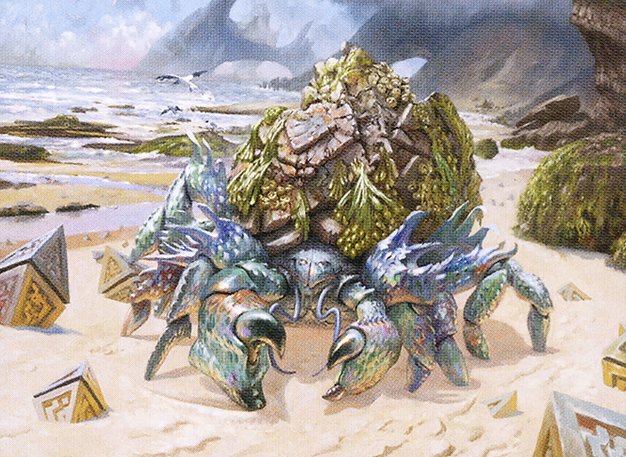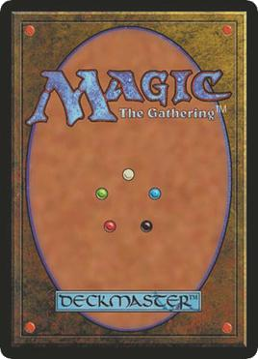 Art by Simon Dominic
Art by Simon DominicThere's a lot of truth to the thesis that Magic The Gathering was at its best whenever you started playing. For me that was in April 2020 around the release of Ikoria so naturally I believe the "Golden Era" of limited to be IKO-ZNR-KHM-STX-MH2. While I could write an essay about each of these sets, the one I'm most passionate about is Zendikar Rising. ZNR was a format that managed to be minimally complex and maximally synergistic at the same time, making it the perfect environment for future draft champs to hone their skills.
A perfect example is the above semi-cycle of commons. In one card, you immediately understand many of the things these colors are trying to do and it's little touches like this that really make the format shine. For a ZNR bible I encourage you to read The Ultimate Guide to Zendikar Rising Draft by Deathsie. It contains all the tools you will ever need to set yourself up for that next 3-0.
However, this begs the obvious question: If Zendikar Rising is so good, why remaster it instead of simply creating a traditional set cube? And to that I have to concede that despite my love for ZNR I acknowledge it has some glaring flaws:
- Removal is relatively inefficient leading to many non-games featuring Luminarch Aspirant
- Too many commons that are borderline unplayable like Utility Knife
- Minimal colorless mana fixing makes it nearly impossible to responsibly splash a 3rd color
- The Landfall decks are too weak relative to their peers
- "Green-Black Counters" completely flops as a draft archetype
This is where the idea behind Zendikar Rising Remastered stems from. How can we maintain the integrity of the original format while also addressing its weaknesses?
On Nuts & Bolts, Mark Rosewater discusses how one of the design philosophies behind Play Boosters was solving the first two problems. Ensure that removal is readily available and effective at answering the bombs you will inevitably see on the other side of the table. Additionally, raise the average power level of commons and avoid narrow designs like Disenchant and Negate clogging up the lowest rarity slot. With the help of cards from across the many other standard sets featuring the Zendikar plane (ZEN,WWK,ROE,BFZ,OGW,MOM) I believe I was able to achieve this goal.
Keeping with this overarching theme of a "ZNR, but Play Boosters", this set cube follows the modern standard of 2 gold uncommons per color pair and should be seeded in packs of 13 (14 cards minus the basic land found in most Zendikar draft boosters). Specifically, each of the 36 packs should contain 6 commons, 3 uncommons, 1 rare/mythic, and 3 wildcards of any rarity. Finally, one wildcard in every other pack should be replaced by 1 of 18 copies of Evolving Wilds which resolves the issue of mana fixing while providing a much-needed buff to landfall strategies.
Which brings us to the archetypes:
Sacrifice

In order to deal with the 5th and final shortcoming of ZNR on my list, the underpowered +1/+1 counters deck was scrapped in favor of an engine consisting of sacrifice fodder, outlets, and payoffs.
Party



In ZRR, Party is supported across every color except Green. Assemble the right mix of Clerics, Rogues, Warriors, and Wizards and the synergies become exponentially gamebreaking.
Alternatively, each of the aforementioned party members has their own draft archetype that rewards you for investing heavily in a single creature type.
Landfall


Grow your landfall creatures into formidable threats (or in rare cases generate a wide board) by finding ways to trigger the powerful keyword multiple times per turn.
Kicker

Ramp up, kick your spells, and never pass Roost of Drakes.
Multicolor Midrange




If you prioritize fixing, anything is possible. Our plans are measured in centuries.
There's a whole lot more to discover if you dare to venture deeper into the roil of Zendikar Rising Remastered and I hope you learn to enjoy this set as much as I do. See you in the finals.

